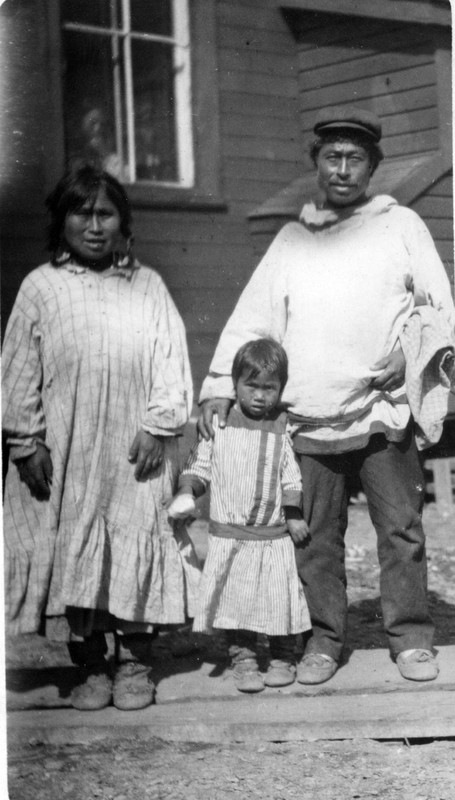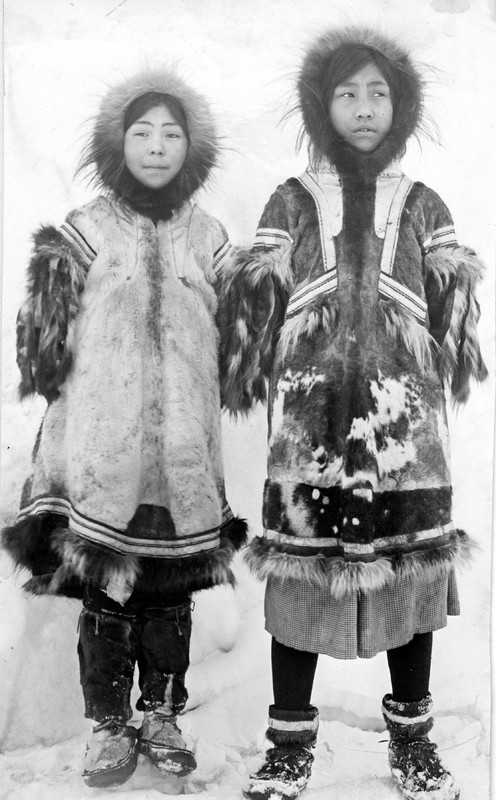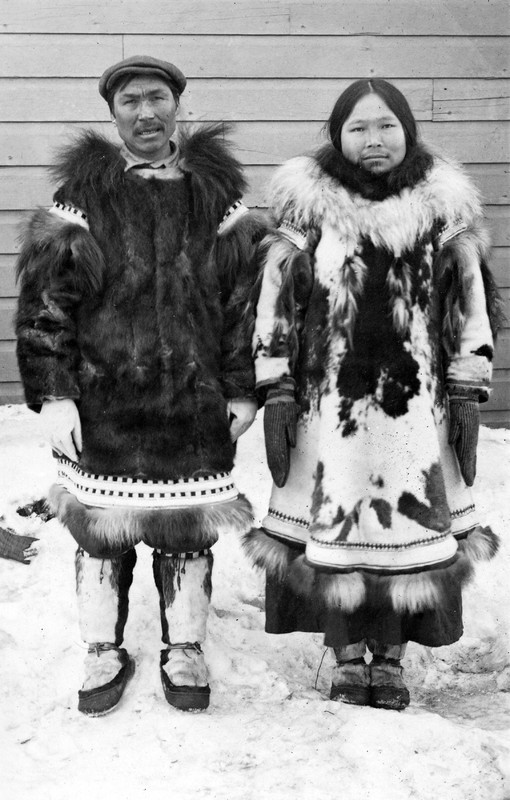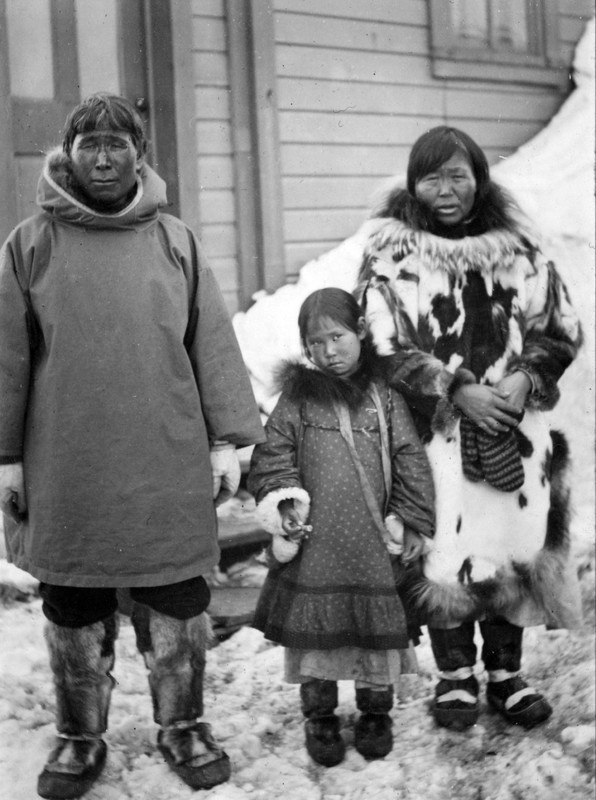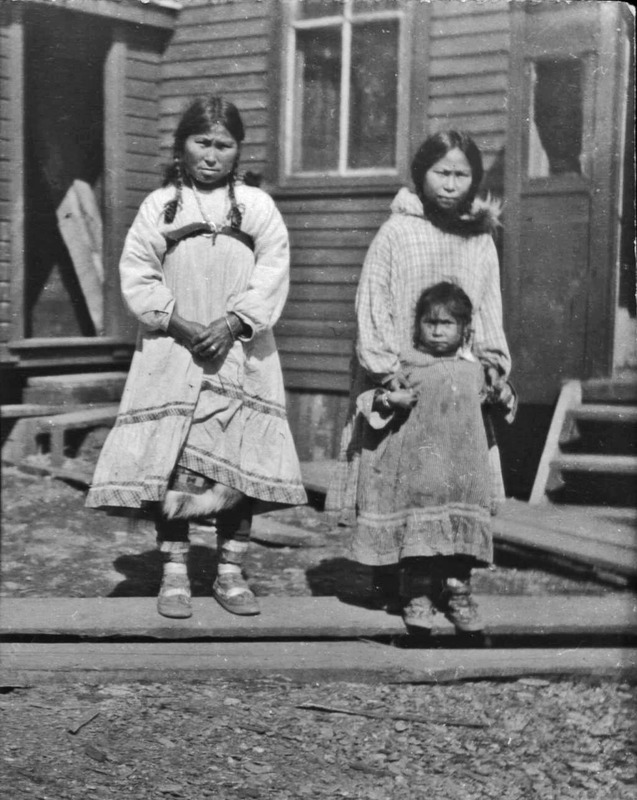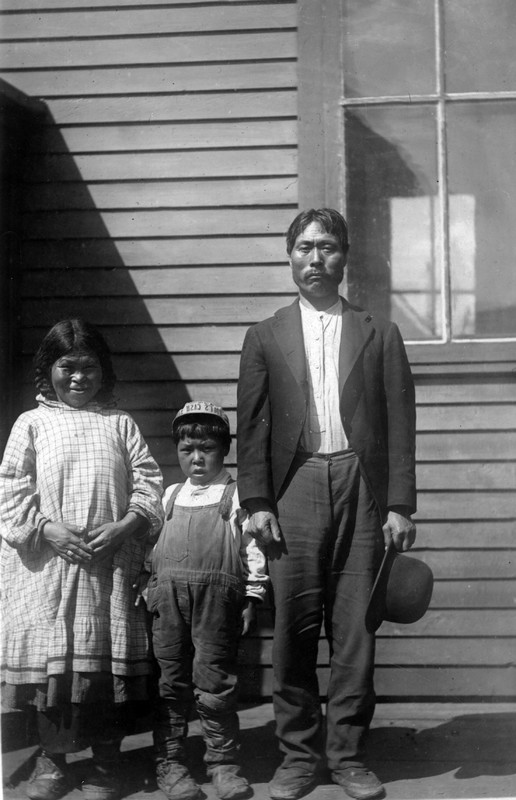King Island and Nome
It appears that many of these photos were taken during the summer months of 1916. After the Nome Gold Rush, many King Islanders would spend extended periods during the summer in Nome. The Gold Rush brought additional trade and tourism. With the exception of the summer months, it was difficult to leave the island for Nome. In his 1987 work A Place for Winter: Paul Tiulana's Story, King Islander Paul Tiulana describes his life on King Island in the early part of the 20th century. Though the period he describes comes after 1916, his writings help contextualize these images.
When describing the different times of the year, he refers to July as "the month of 'going over to the mainland'" and he calls September "ready to go back to the island." While in Nome, Tiulana writes that they would dance, trade, and visit with aquaintances. It seems that Father Treca took these photographs during those months.
Source: Paul Tiulana, A Place for Winter: Paul Tiulana's Story (CIRI Foundation, 1987). When the Bureau of Indian Affairs closed the remaining school on King Island in the mid-20th century, most members of the community came to the mainland permanently. With this diaspora of King Islanders, many began to lose their connections to each other and their traditions. Tiulana is one of many King Islanders who make sure their cultural heritage not only survives but thrives. The NEA (National Endowment for the Arts) awarded him a National Heritage Fellowship in the 1980s.
This image in particular would suggest that many of the photos were taken during the months Tiulana recounts as being spent on the mainland. The bright sun and lighter clothing would suggest summer months.
The presence of snow and heavier parkas in some of the photographs (like these) suggest that either a heavy snowfall came early or late that year. Or it's possible that the community got an early start coming to Nome or a late start returning to King Island.
At first glance, an out-of-season snow seems likely since Tiulana recounts that the Bering Sea could become rough during October. He also identifies October as "the icy month." A late start returning to King Island would likely make the trip a bit precarious. Additionally much of June was spent on preparing and storing food for winter. There was a particular cave on King Island that remained cold yearround and was ideal for storing food. Making sure this cave was well stocked would prove important for the winter months.
Though an out-of-season snow seems likely, the King Islanders did leave Nome a little later that year. The Nome Jesuits note that the King Islanders began packing up to leave on October 12th. It's good that they left when they did. A large snow storm hit Nome later that month and the Jesuits describe the sea as "wild."
Nome House Diary of the Jesuits, Nome Collection, Part 1, The Alaskan Mission Collection of the Oregon Province Archives of the Society of Jesus, Gonzaga University. Summer of 1916 described on pages 164-167.
Many of these photographs were taken in front of the "Eskimo chapel" at St. Joseph's parish in Nome. The Eskimo chapel was a simple clapboard building behind the main St. Joseph's Church building.
One of the main reasons for the seperate chapel was language. During these earlier decades of the twentieth century, mass in the Eskimo chapel was typically in Inupiaq. Though this was the practical reason for the seperate Eskimo chapel, many local white Catholics likely preferred the seperate services.
For an interior image of the Eskimo chapel, see "History Publications," The Alaskan Mission Collection, Part 2, of the Oregon Province Archives of the Society of Jesus, Gonzaga University. Image on page 78.

